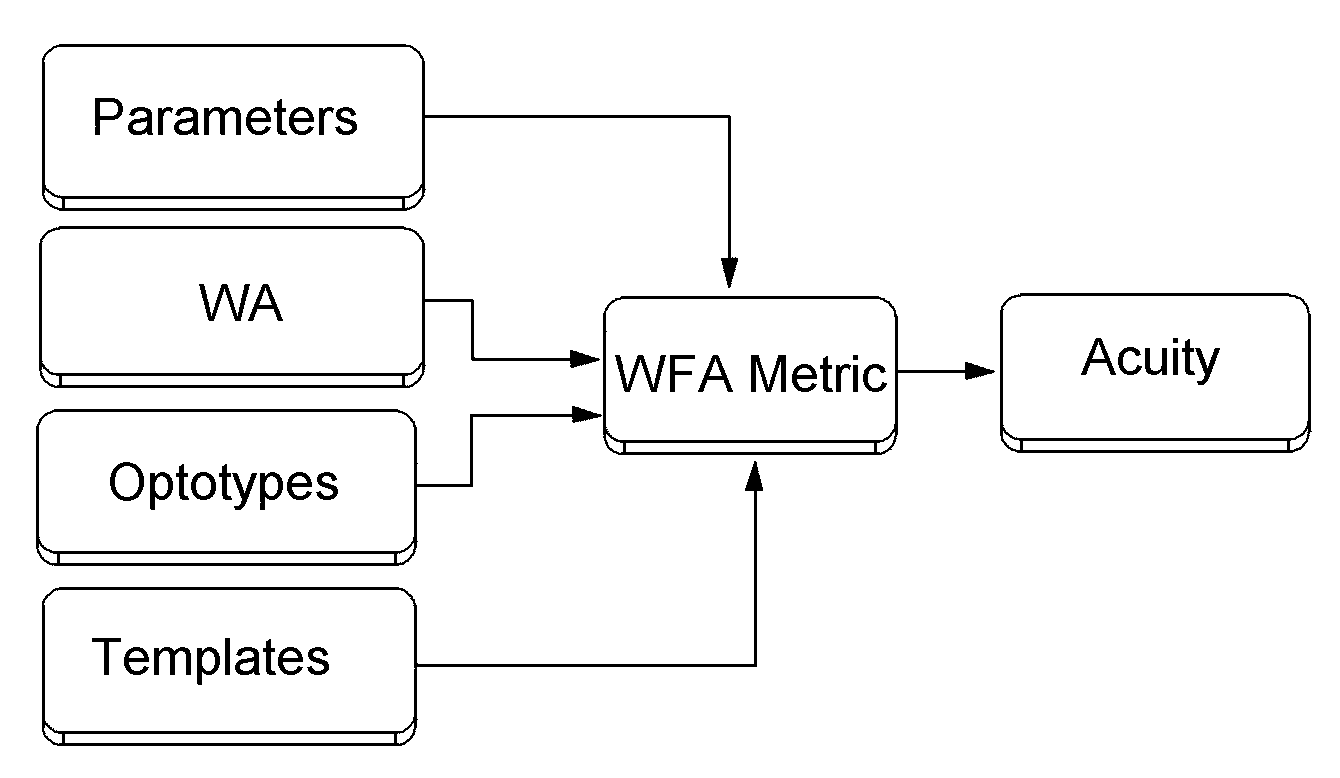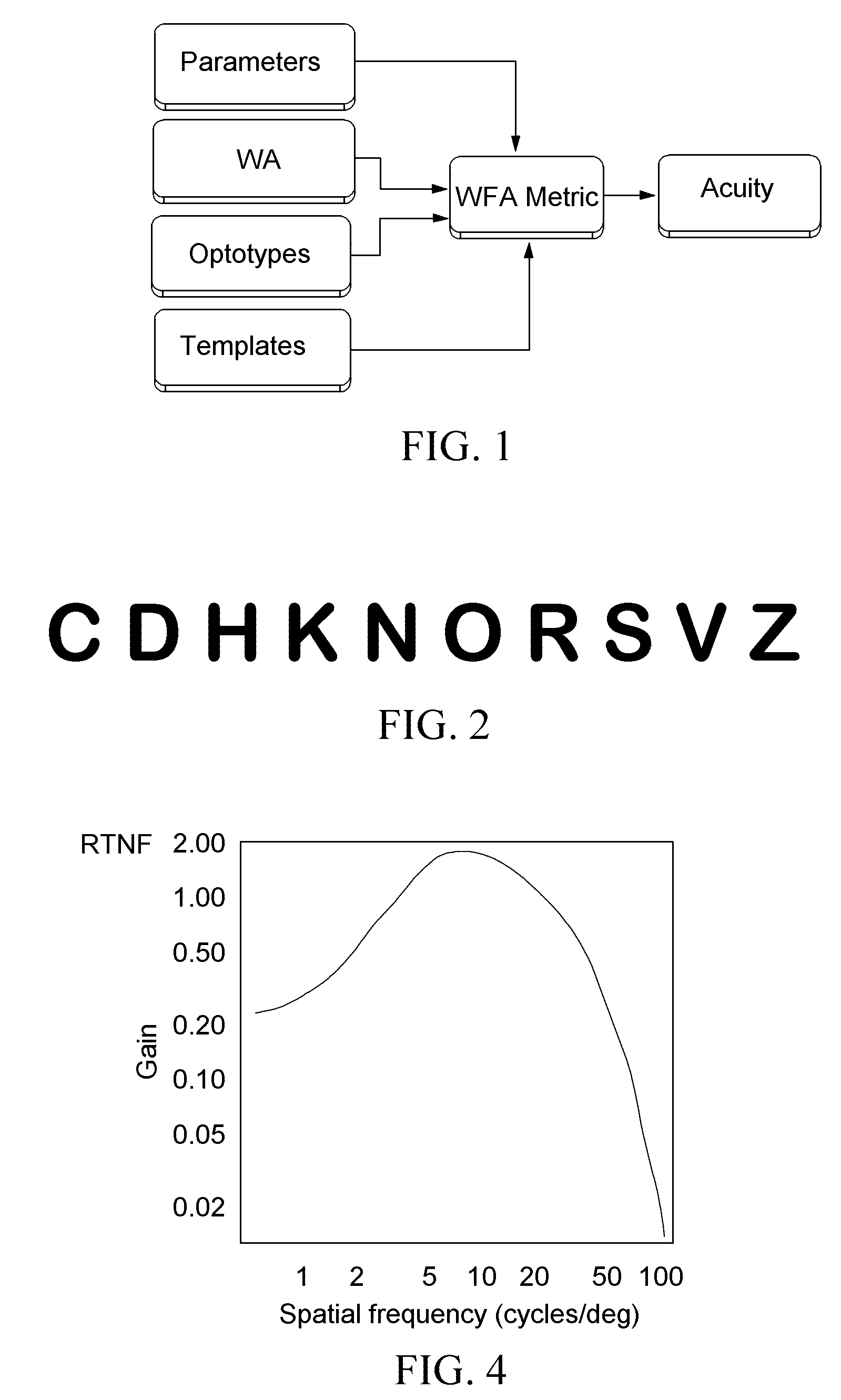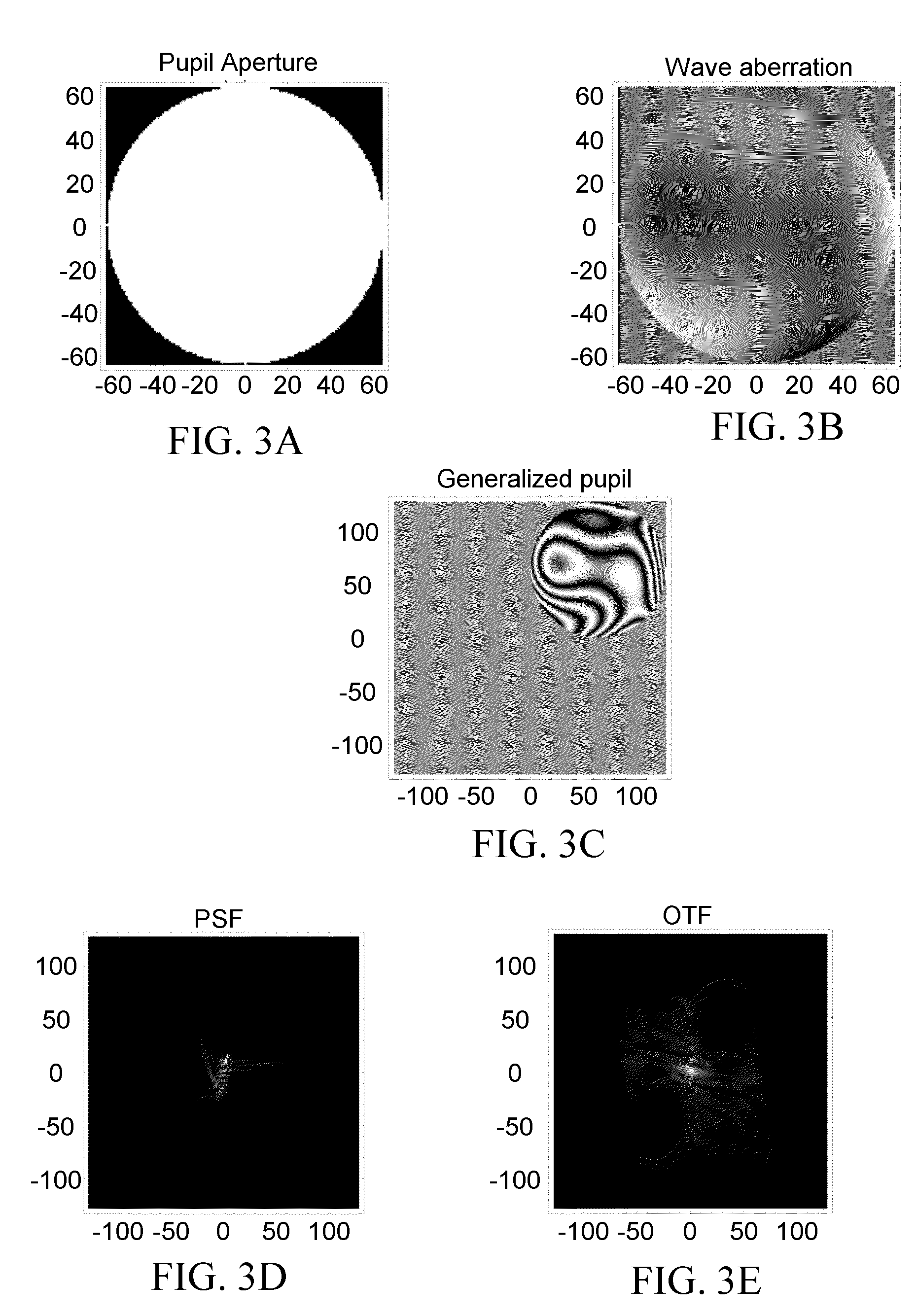Prediction of visual acuity from wavefront aberrations
a wavefront aberration and visual acuity technology, applied in the field of visual acuity, can solve the problems of not providing best acuity, spherical and cylindrical components of aberrations, and one cannot measure visual acuity, so as to achieve the effect of calculating the predicted change in visual acuity
- Summary
- Abstract
- Description
- Claims
- Application Information
AI Technical Summary
Benefits of technology
Problems solved by technology
Method used
Image
Examples
Embodiment Construction
0. Notation and Terminology
[0015]In this presentation, an “image” refers to a finite discrete digital image represented by a two-dimensional array of integers or real numbers. It has a width and height measured in pixels. Where the size is specified it will be given as a list {rows,columns}. The image has a resolution measured in pixels / degree. The pixel indices of the image are x (columns) and y (rows). Images will usually be an even number of pixels wide and tall. If the image size is {2h,2h}, then the indices x and y each follow the sequence {−h, . . . , 0, . . . , −h−1}. This places the origin of the image at the center. An image may be written with explicit row and column arguments A(x,y), or without the coordinates as A.
[0016]In this presentation, a dft refers to a two-dimensional finite discrete digital array of complex numbers representing a Discrete Fourier Transform (DFT). It has a width and height measured in pixels. Where the size is specified it will be given as a list ...
PUM
 Login to View More
Login to View More Abstract
Description
Claims
Application Information
 Login to View More
Login to View More - R&D
- Intellectual Property
- Life Sciences
- Materials
- Tech Scout
- Unparalleled Data Quality
- Higher Quality Content
- 60% Fewer Hallucinations
Browse by: Latest US Patents, China's latest patents, Technical Efficacy Thesaurus, Application Domain, Technology Topic, Popular Technical Reports.
© 2025 PatSnap. All rights reserved.Legal|Privacy policy|Modern Slavery Act Transparency Statement|Sitemap|About US| Contact US: help@patsnap.com



